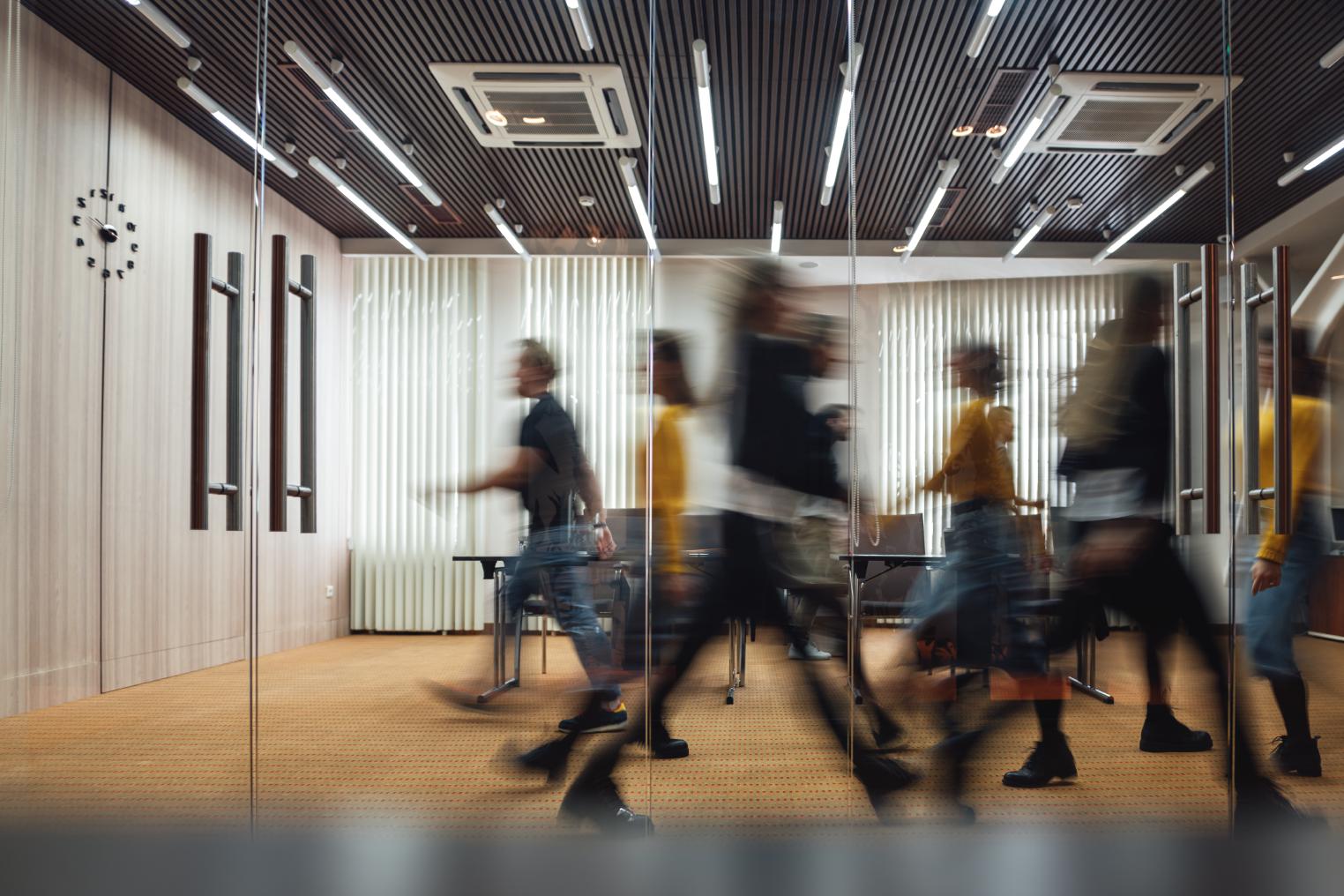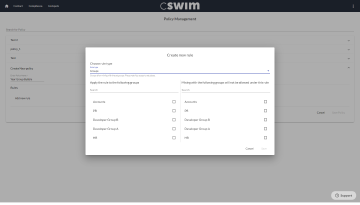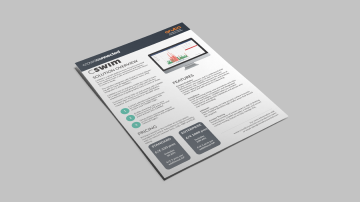Workplace distancing, contact tracing, and covid risk management

Workplace distancing, contact tracing and COVID risk management
Our first article looking at COVID management in the workplace is an overview of all the exposure reduction measures that go into creating a COVID-secure workplace.
How the virus spreads in the workplace
Air or Surface
There are two ways COVID-19 spreads from one person to another. Directly through the air, or via surfaces.
The focus on hygiene - hand washing, cleaning surfaces, moving to contactless entry, is all aimed at stopping spread via surfaces. These are all valuable measures. But there’s growing evidence that the vast majority of spread is happening directly through the air. And experts are starting to call the relentless emphasis on hand and surface cleaning ‘hygiene theatre’.
Droplet or aerosol
Spreading of the virus through the air is usually split into two categories: shorter range (spread via large droplets that quickly fall to the ground) and longer range (spread through small aerosol particles, that can remain airborne for longer). It’s neat to have just two categories: droplet and aerosol. But in reality particle size varies continuously and any dividing line is arbitrary.
Reducing workplace transmission
Reducing transmission through the air
Distancing is a concept that we’ve all got used to in the last few months. Whether we call it social distancing, or physical distancing, or workplace distancing, we mean the same thing. Making sure there’s always a metre or two between us and anyone we come into contact with.
This measure is designed to reduce shorter range droplet transmission. Any virus expelled as someone coughs, sneezes, or speaks will fall to the ground before it can reach our mouth, nose, or eyes.
It’s still a central part of reducing transmission risk. But there is a growing concern amongst experts that longer-range aerosol transmission is far more important, and that hygiene and distancing measures alone are not sufficient.
Reducing aerosol transmission relies on changing or filtering the air. Better ventilation and air filtration systems reduce the amount of virus present in the air we breathe and reduce the risk of transmission.
Group isolation
A second way of tackling aerosol transmission is an extreme form of social or physical distancing. By keeping employees or workers in isolated groups, they never share the same potentially contaminated air. It’s not feasible to limit the use of the canteen to one person at a time (with a complete air change in between). But it is feasible to keep different groups completely isolated from each other.
As the emphasis shifts from short-range droplet transmission to aerosol transmission, so it will shift from social or physical distancing only to a combination of distancing and group isolation.
Another benefit of keeping groups isolated is that it can help ensure business continuity. If workplace or regulatory protocol is to isolate anyone who may have come into contact with an infected colleague, you can make sure that any critical functions can continue by simply designing the right group structure.
Focus on unnecessary contact
Social or physical distancing, and group isolation, are ways or reducing contact between people. That’s how they reduce exposure risk. But contact between individuals is exactly why we want people to return to the office.
So it’s important that the goal is not eliminating contact, but reducing it to an acceptable level. The focus should be on eliminating unnecessary or low-value contact, so we can allow, and encourage high value, desirable contact.
Closing or severely limiting contact within a work canteen might look like a good risk reduction step. And limiting the number of face to face meetings might also look like an obvious measure. But this type of contact is valuable. It’s exactly the kind of contact that is beneficial, but we don’t get when working remotely.
Conversely, contact between people while moving around the workplace is generally less valuable. You’re less likely to have a meaningful exchange with a coworker while queuing at reception to gain access to the building, or passing in a busy corridor, or sharing an elevator.
Risk management has to take into account the value of contact as well as the risk of exposure. The starting point is to understand where, when, and between whom contact is happening. And then weigh up the risk against the value, before implementing any control measures.
Health Screening
A final method of reducing exposure risk to prevent infectious people from entering the workplace is screening. That feels like it should be a priority. But it’s easier said than done.
One common approach is temperature screening. But experts are highly sceptical about its effectiveness. Too much transmission is from asymptomatic or presymptomatic individuals. And too many fevers have other causes.
Another common approach is symptom screening. Apps are available that require users to go through a daily checklist reporting any COVID-like symptoms. Those with symptoms can be excluded from the workplace. But this approach suffers exactly the same issue as temperature screening. Too much spread is from asymptomatic and presymptomatic individuals.
A more effective but more challenging approach is mass testing. If you regularly test every employee or worker, then you can find infectious individuals whether or not they display symptoms, and isolate them.
The frequency of testing is critical. Modelling has shown that in educational settings, testing the entire population on a weekly basis is not sufficient to prevent widespread infection. Too many individuals have become infectious and transmitted the virus to multiple contacts before they test positive. As a result, some universities in the US have announced they are planning to test every student and faculty member every 2 days.
It seems unlikely that workplaces will be able to test every employee or worker, every 2 days. At least until testing becomes dramatically cheaper, easier, and quicker.
So if temperature and symptoms screening are of doubtful effectiveness, and if mass testing every 2 days isn’t currently feasible, what can workplaces do to reduce the number of infectious people entering?
Contact Tracing
A potential answer is contact tracing. By reliably identifying and isolating people who may have been in contact with an employee who tests positive in the period before their test, the chain of transmission can be broken, without having to reduce the testing period down to 2 days.
Similarly, the chain of transmission can be broken for workers who develop symptoms but may have spread the infection to other workers while they were presymptomatic.
National contact tracing systems are all struggling. Particularly those involving apps. But in the workplace technologies like wearables and WiFi data are viable for contact tracing, and may be effective enough to be extremely valuable.
Summary
Symptom Screening
Either through temperature screening or symptom questionnaires. Ineffective against asymptomatic and presymptomatic spread. Experts are dubious of the value, particularly of temperature screening.
Testing
Testing every 2 days could be highly effective, but will not be feasible in most workplaces. Less frequent mass testing might be effective when combined with contact tracing.
Contact tracing
While national contact tracing apps are struggling, more effective technologies like wearables may be feasible in workplaces.
Distancing
Keeping 2 meters apart where possible will reduce short-range spread through droplets, and should be part of any workplace exposure controls.
Group isolation
Isolating different groups or bubbles can reduce the impact of long-range aerosol spread, as well as ensuring business continuity. It should be part of any workplace exposure controls.
Hygiene
Hand washing, contactless entry, and surface cleaning should continue. But with lower emphasis. Hygiene theatre must not divert attention from distancing, group isolation, testing, and contact tracing.
Air replacement and filtering
Many experts would like to see more emphasis on ventilation and/or air filtering. There is growing evidence that longer-range aerosol transmission is important and the focus cannot be solely on distancing to reduce short-range droplet exposure.


